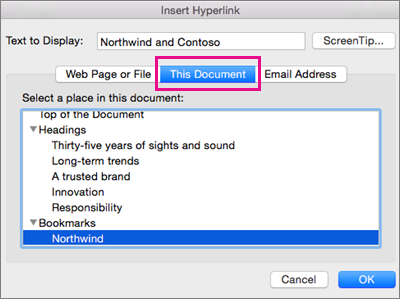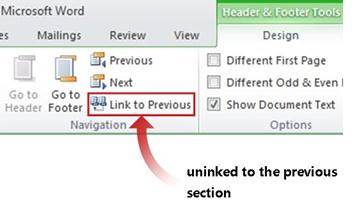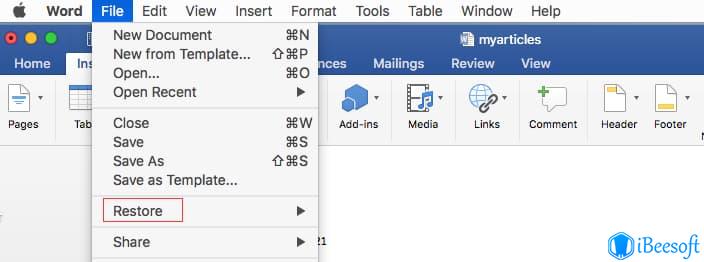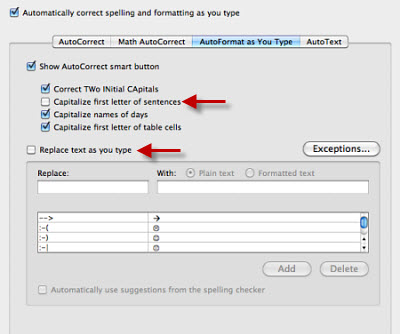How to Save the Formatting When Emailing a Word Document. Microsoft Word is a word processing program that contains an array of utilities and tools for creating letters, memos and other documents including documents with multiple pages, embedded tables and charts. The following steps show how to remove the link between a Word document and a mail merge data source. When you open a Word document that has mail merge data source you see a message that reads: Opening this document will run the following SQL command. These steps work in both Word 2013 and Word 2016.
- Remove Formatting Keep Links Word For Mac Osx
- Remove Formatting Keep Links Word For Mac Os
- Word Remove Formatting Marks
There are two ways to format a hyperlink in a Word document:
- You apply the Hyperlink or FollowedHyperlink style to some text.
- Word formats hyperlinks automatically. Word has three features where this happens:
- If you create a hyperlink using Insert > Hyperlink, Word creates a hyperlink.
- By default, when you type something in a Word document that smells like a web address or an email address, Word automatically turns it into a hyperlink.
- You can insert a Hyperlink field, either by typing it directly or by using Insert > Quick Parts > Field.
You'd think that Word would format the hyperlink in the same way in both cases. I always thought so. But I was wrong.
What appears to happen
By default, when Word formats a hyperlink, the hyperlink appears blue with a blue underline, and a followed hyperlink appears in a purple-ish, violet colour, with purple-ish violet underline.
Word has built-in styles named 'Hyperlink' and 'FollowedHyperlink'. 'Hyperlink' is blue. 'FollowedHyperlink' is purple-ish violet.
You could be forgiven for thinking that when you or Word create a hyperlink, Word automatically applies the Hyperlink or FollowedHyperlink character styles.
But… you would only be half right.
It only looks like Word is applying the Hyperlink and FollowedHyperlink styles because, out of the box, they have the same colour for text and underline.

What is really happening
If you modify the Hyperlink and/or FollowedHyperlink styles, you can set a different colour for the text and the underline. Let's say green text and a pink underline.
If you apply that style to some text in your document, Word will correctly format the text in green and give it a pink underline.
But… when Word automatically creates a hyperlink, or if you create a hyperlink using Insert > Hyperlink, Word does not properly apply the Hyperlink or FollowedHyperlink style. It will have green text, but the underline that should be pink will be green.
Remove Formatting Keep Links Word For Mac Osx
When you create a hyperlink, Word kind of half applies the Hyperlink style. It gets the type of underline right (dotted, dashed, thick, thin). It gets the font style correct (italic, bold, shadowed, small caps and so on). But Word ignores the Hyperlink's definitions of:
- underline colour
- font size
- font.
Word displays the hyperlink's underline in the same colour as its text.

So, it's very easy to end up with a document that's a mess. If you happen to apply the Hyperlink style yourself, the hyperlink will have a pink underline. If Word formatted the hyperlink automatically, it won't have a pink underline.
Figure 1: In Word 2010, click the little arrow in the Navigation Pane and select Replace. To see the Navigation Pane, on the View tab, tick the Navigation Pane box.
One-time fix: Find and replace the Hyperlink style
You can fix this problem, and have hyperlinks display as you have defined the Hyperlink style.
- Open the Replace dialog. To do that, do CTRL-h. Or, in Word 2003 or earlier, do Edit > Replace. Or, in Word 2007 or Word 2010, on the far right of the Home tab, click Replace. Or, in Word 2010, use the little menu in the Navigation Pane (Figure 1).
- In the Replace dialog, click the More button. Within this dialog (Figure 2):
- Click in the Find what box.
- Click Format > Style and choose the Hyperlink style. Leave the Find what box empty. (Remember that, in Word 2007 and Word 2010, the order in which the styles are listed may appear to be completely random.)
- Click in the Replace with box, then click Format > Style and choose the Hyperlink style. Leave the Replace with box empty.
- Click Replace All.
Figure 2: Use the Replace dialog to find and replace all instances of the Hyperlink style
This will apply the Hyperlink style as you defined it to all links, including links in headers, footers, footnotes, endnotes, text boxes, SmartArt and comments.
You'll have to re-do the search and replace if you add more hyperlinks to the document.
Remove Formatting Keep Links Word For Mac Os
So this is a one-time fix, rather than a genuine workaround.
Other strange things about formatting links

- If you apply a paragraph style to a paragraph that contains a hyperlink, and Word does not adjust the font of the hyperlink to match the paragraph style, then the Hyperlink may have acquired a font in its definition. Word won't respect the font, but it will won't respect the font of the underlying paragraph, either. To fix this: modify the style. Specifically, in the Modify Style dialog, choose Format > Font. Delete anything in the Font box. OK, OK to get back to your document.
- When you create a table of contents, by default Word links the entries in the table of contents to the headings in the document. It tells you that it has applied the Hyperlink style to these links. But it does not apply any of the characteristics of the Hyperlink style. The table of contents entries display the formatting of the TOC 1, TOC 2 etc styles that Word uses to construct the table of contents. So the Hyperlink style is there, but is not put into effect.
- When you create a cross-reference (using Insert > Cross-reference), Word makes the cross-reference a clickable link. But it doesn't format the link with the Hyperlink style.
- When you use the GOTOBUTTON field, Word makes a link that you must double-click. But it doesn't format the link with the Hyperlink style.
Related pages
See Suzanne Barnhill's article Common Hyperlink Problems.
Related subjects
Topic: Formatting
Tags:Character styles, Find and replace, Hyperlinks
Interest: For users
Version: Word 2002Word 2003Word 2007Word 2010
Created 1 October 2010
Home > Articles > Home & Office Computing > Microsoft Applications
␡- Locking Document Formatting
This chapter is from the book
This chapter is from the book
Locking Document Formatting
Like most modern word processors, Word fits into the category of fritterware—programs with so many formatting bells and whistles that you can end up frittering away hours and hours by tweaking fonts, colors, alignments, and so on. Whether you think of such activity as 'frittering' depends on your point of view, but we all agree that a well-formatted document makes a better impression than a plain or sloppy-looking one. So no matter how much time you've devoted to getting your document just so, the last thing you want is another person running roughshod over your careful look and layout.
Fortunately, Word offers the capability to lock your document's formatting, which prevents others from changing the formatting unless they know the password. Here are the steps to follow:
- Choose Review, Protect Document (or choose Developer, Protect Document) and then click Restrict Formatting and Editing. Word displays the Restrict Formatting and Editing task pane.
- Click to activate the Limit Formatting to a Selection of Styles check box.
- Click Settings to display the Formatting Restrictions dialog box, shown in Figure 3.3.
Figure 3.3 Use the Formatting Restrictions dialog box to restrict the formatting another user can apply to a document.
- In the Checked Styles Are Currently Allowed list, deactivate the check box next to each style that you want to disallow. Alternatively, use the following buttons to set the check boxes:
- All—Click this button to activate all the check boxes and thus enable unauthorized users to apply formatting using only the existing styles; these users cannot modify the existing styles or create new styles.
- Recommended Minimum—Click this button to activate the check boxes for only those styles that Word determines are necessary for the document.
- None—Click this button to deactivate all the check boxes and thus prevent unauthorized users from changing any document formatting.
- Choose your formatting options:
- Allow AutoFormat to Override Formatting Restrictions—Click to activate this check box if you want any AutoFormats that the user applies to affect restricted styles.
- Block Theme or Scheme Switching—Click to activate this check box to prevent the user from changing formatting by applying a formatting theme or scheme.
- Block Quick Style Set Switching—Click to activate this check box to prevent the user from changing formatting by applying a Quick Style.
- Click OK.
- If Word warns you that the document contains disallowed styles, click Yes to remove them or click No to keep them.
- In the Restrict Formatting and Editing task pane, click Yes, Start Enforcing Protection. The Start Enforcing Protection dialog box displays.
- Type the password twice and then click OK. Word disables all the formatting commands on the Ribbon.
If you or another authorized user need to change the document formatting, choose Review, Protect Document (or choose Developer, Protect Document), click Restrict Formatting and Editing, and then click Stop Protection. Type the password, click OK, and then deactivate the Limit Formatting to a Selection of Styles check box.

Word Remove Formatting Marks
Related Resources
- Online Video $239.99
- Online Video $239.99
- Online Video $239.99